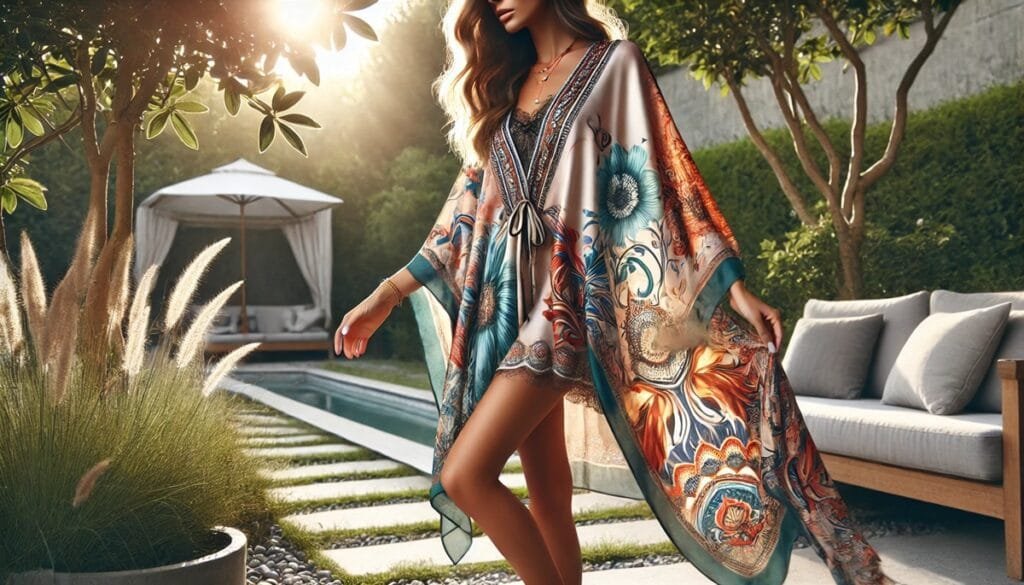The kaftan, an enduring symbol of comfort and style, has transcended cultures and generations to remain a beloved garment worldwide. Whether you’re lounging at home, attending a glamorous event, or hitting the beach, this flowing piece of clothing is a versatile addition to any wardrobe. Let’s dive into the fascinating history, modern trends, and ways to style a kaftan to make the most of its timeless charm.
What Is a Kaftan?
A kaftan is a loose-fitting, long robe or tunic, often made from lightweight fabrics like cotton, silk, or chiffon. Originally rooted in Middle Eastern and North African traditions, the kaftan has evolved over centuries, adapting to various cultural contexts. It is characterized by its flowy silhouette, which offers unmatched comfort and a touch of elegance.
The Rich History of the Kaftan
The origins of the kaftan can be traced back to ancient Mesopotamia, where it was worn by royalty and the elite. As it spread across regions like the Ottoman Empire, Morocco, and Persia, the kaftan became a canvas for intricate embroidery, rich fabrics, and bold patterns. Over time, it entered mainstream fashion, especially in the 1960s and 1970s, as a symbol of bohemian chic.
Why Kaftans Are Loved Worldwide
- Comfort Meets Style: Kaftans are designed for ease of movement, making them an excellent choice for any occasion.
- Versatility: From casual to formal settings, kaftans can be styled in myriad ways.
- Flattering for All Body Types: The loose silhouette flatters every figure, offering both elegance and confidence.
- Seasonal Appeal: Whether in summer’s heat or winter’s chill, kaftans adapt with the right choice of fabric.
Modern Kaftan Trends
1. Vibrant Patterns and Colors
Modern kaftans feature vibrant prints, from floral designs to geometric patterns, making them statement pieces.
2. Embellishments and Details
Beaded necklines, sequins, and embroidery have elevated the kaftan into a glamorous outfit suitable for parties and weddings.
3. Short and Midi Kaftans
While traditional kaftans are long, shorter versions have gained popularity for casual outings and beachwear.
How to Style a Kaftan for Every Occasion
Casual Daywear
- Pair a cotton kaftan with flat sandals and minimal accessories for a laid-back look.
- Opt for earthy tones or pastel shades for a subtle aesthetic.
Evening Glamour
- Choose a silk or velvet kaftan with intricate detailing.
- Accessorize with statement jewelry and a clutch bag for an elegant ensemble.
Beach Chic
- A lightweight, sheer kaftan layered over a swimsuit is the ultimate beach look.
- Add a wide-brimmed hat and sunglasses to complete the vibe.
Work-Appropriate Style
- Go for a structured kaftan with a belt to cinch the waist.
- Pair with closed-toe shoes and a tote bag for a professional appearance.
Kaftan Fabrics: Choosing the Right Material
The fabric you choose significantly affects the look and feel of your kaftan. Here’s a breakdown:
| Fabric | Ideal For | Key Features |
|---|---|---|
| Cotton | Casual daywear, summer | Breathable and lightweight |
| Silk | Formal events, evening wear | Luxurious and glossy |
| Chiffon | Beach outings, layering | Sheer and flowy |
| Velvet | Winter gatherings, parties | Warm and plush |
| Linen | Resort wear, tropical vacations | Crisp and airy |
Kaftan vs. Other Traditional Garments
Although kaftans share similarities with other traditional garments, they have distinct features:
- Tunics: Shorter and less flowy compared to kaftans.
- Abayas: Typically more conservative with a closed-front design.
- Sarongs: Wrap-around style, not stitched like kaftans.
Accessories to Elevate Your Kaftan Look
- Belts: Add structure by cinching the waist with a stylish belt.
- Jewelry: Chunky necklaces, earrings, or bangles can transform a simple kaftan into a glamorous outfit.
- Footwear: Match with flat sandals for casual wear or heels for formal settings.
- Bags: Clutch bags work best for parties, while tote bags suit casual outings.
The Kaftan in Popular Culture
Celebrities and designers have played a significant role in reviving the kaftan. Icons like Elizabeth Taylor and Beyoncé have showcased kaftans on and off the red carpet, making it a fashion-forward choice for modern wardrobes.
Tips for Buying the Perfect Kaftan
- Consider Your Body Type: Look for designs that enhance your figure.
- Pick the Right Fabric: Opt for breathable fabrics in summer and heavier ones in winter.
- Check the Length: Choose a length that suits the occasion and your style.
- Evaluate the Detailing: Ensure embellishments are well-stitched and durable.
Kaftan Maintenance: Caring for Your Garment
- Wash delicate fabrics like silk and chiffon by hand.
- Store your kaftan in a cool, dry place to prevent fabric damage.
- Iron on low heat, especially for embellished pieces.
Conclusion
The kaftan’s timeless appeal lies in its ability to blend comfort with style, making it a must-have in any wardrobe. From its rich cultural roots to its modern reinvention, the kaftan is a versatile garment suitable for all occasions. Whether embracing its heritage or experimenting with contemporary trends, the kaftan offers endless possibilities for self-expression.
FAQs
What makes a kaftan different from a tunic?
A kaftan is longer and flowier than a tunic, often reaching the ankles, while tunics are shorter and less voluminous.
Can kaftans be worn in winter?
Yes, opt for kaftans made from warm fabrics like velvet or wool, and layer with a jacket for added warmth.
Are kaftans suitable for formal events?
Absolutely! Choose kaftans with luxurious fabrics and embellishments for a sophisticated look.
How do you accessorize a kaftan?
Pair with statement jewelry, belts, and stylish footwear to elevate your outfit.
What fabrics are best for summer kaftans?
Lightweight fabrics like cotton, linen, and chiffon are perfect for summer kaftans.



